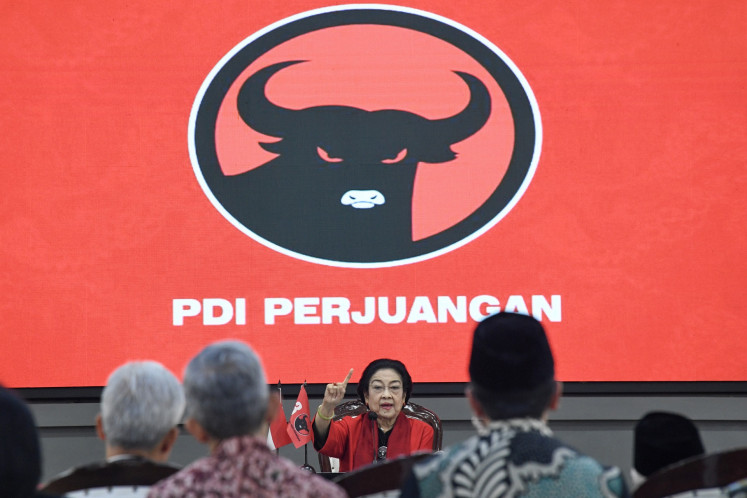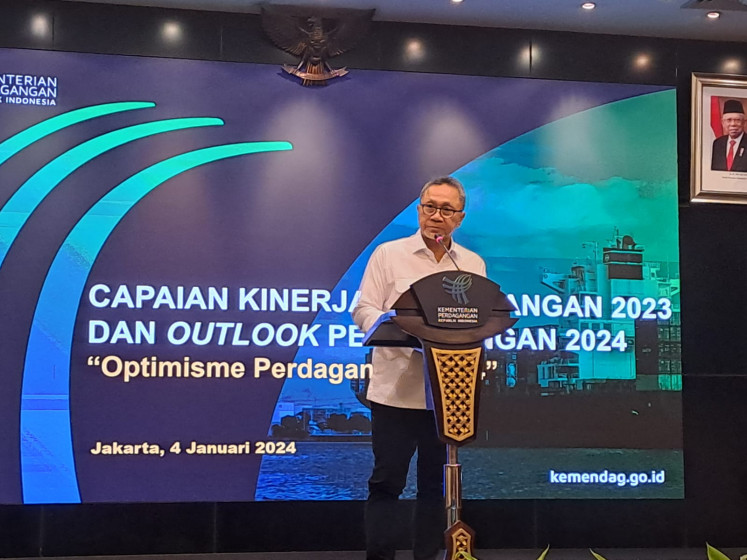Student contacts highlight RI-US science technology ties
Perceptions of Indonesia to a foreigner tend to be unclear
Change Size

P
erceptions of Indonesia to a foreigner tend to be unclear. To budding teenage American scientists, Indonesia is a country that is heavily, if not completely, covered by forests.
“Indonesia is the emerald of the equator because it looks green [from satellite photos] like an emerald and it’s located on the equator,” 16-year-old Labschool senior high school student Riskyastari said Tuesday.
“We also have a mall that has the longest slide in the world,” she continued.
Riskyastari and her fellow Indonesian science students were introducing Indonesia in a video teleconference at the US Embassy with US high school science students in California.
In the conference, each country was represented by three teams that shared a common interest in robotics.
US students demonstrated a robot called the Tin Man.
The Tin Man moved in many directions as programmed, controlled by a joystick.
Indonesian students from SMAN 28 State senior high school demonstrated a robot that could follow objects in front of it by detecting motion.
They also displayed a robot that could detect the surrounding humidity and temperature as it moved.
Students from Techno Natura Islamic High School built a robot called the T Bot that could videotape images captured through a telescope.
They also built a simulated environment called the Eco Bot.
“The idea initially came up as a way to ensure fish in an aquarium were always fed when we’re away,” Sayyidathu Thifal Atqiyya said.
“It’s connected to an automated food dispenser, alkali to control acidity, and oxygen to maintain oxygen supply. The feeders are all physically separated from the aquarium but are connected to it by a program.”
She said she expected the Eco Bot project to by complete in four to six weeks.
Techno Natura principal Riza Wahono said the project cost around Rp 20 million (US$2,220).
The head of the environment, science, technology and health section at the US Embassy, Hugo Yon, said Indonesian and US scientists would have greater collaboration following the historic signing of the science and technology agreement last month.
“[The agreement] allows for scientists from both sides — whether space or ocean or climate or disease — to begin working together,” he said following the teleconference.
Both sides were now discussing the types of cooperation possible as a follow up to the March agreement, Yon said.
He said the first science and technology agreement Indonesia signed with a foreign government was the one with the US under then state research and technology minister B.J. Habibie in 1992. The agreement expired in 2002.
The new agreement, he said, had been endorsed in a major speech delivered by US President Barack Obama in Cairo, Egypt, in February last year, as well as in the visit of US Secretary of State Hillary Clinton to Indonesia.
“I think the speech in Cairo redoubled our motivation to finish the agreement [in March], particularly when President Obama and Secretary Clinton decided that Indonesia would be one of those first three countries [apart from Egypt and Turkey] under the Cairo science engagement,” Yon said.
In his Cairo speech, Obama said, “on science and technology, we will launch a new fund to support technological development in Muslim-majority countries, and to help them transfer ideas to the marketplace so they can create more jobs.”
Yon stressed “the science engagement” would go beyond the Muslim community. “Science is not just a US and Muslim world issue. It’s a global issue.”
Robots have feelings: Ahmad Rifki Alhadi, a student of SMAN 28 high school in Jakarta, demonstrates his expertise in robotics with his Sandbot Bot robot during a digital video conference with his American counterparts in California, at the US Embassy in Jakarta, on Tuesday. Sandbot Bot can detect temperature, humidity and poisonous gas in a room. JP/Nurhayati









